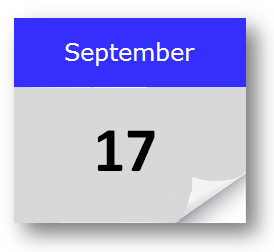In 1789 William Herschel discovered Saturn’s moon, Mimas.
William Herschel was born in Hanover, Germany on the 15th of November 1738. He moved to England at the age of nineteen with his brothers after serving in the German army. He became an accomplished composer and could play many instruments. His love of music led him to maths, then into the construction of telescopes (building over 400) and inevitably he became interested in astronomy. On a Newtonian telescope he began studying twin stars and catalogued many new discoveries. One object he studied, believing it to be a star, seemed to move in planetary orbit and once this was confirmed that is was a planet just out from Saturn, Herschel named it ‘Georgium Sidus’ or Georgian Star after King George III of England. The Name was not accepted by many, particularly the French who named the Planet ‘Herschel’ and later German Astronomer Johan Bode suggested the name ‘Uranus’, following the tradition of mythical gods. Herschel also discovered two of Uranus’s moons, Titania and Oberon, on 11th of January 1787 as well as two of Saturn’s moons, Enceladus and Mimas on the 28th of August 1789 and 17th of September 1789 respectively. He also calculated that the Milky Way was disc shaped and made many more discoveries.
In 1939 the Soviet army joined their German allies began their own invasion of Poland
The politics of Nazi Germany and Soviet Russia were vastly different and Hitler was known for his intolerance towards communism. In his autobiographical book “Mein Kampf” (which he wrote while in prison in 1924 and was published the following year) Hitler talks of his hatred of communism and his belief that the superior German race had a destiny to conquer Russia, allowing the German race to grow. However Germany and the Soviet Union did have some common ground. Both nations’ politics were opposed to the allied capitalist nations and on this basis Germany and the Soviet Union signed a non-aggression pact on the 23rd of August 1939. The Molotov-Ribbentrop Pact (named after the two foreign ministers that signed the pact) ensured that the German’s, who were allied with Japan, would not attack Russia over the Soviet-Japanese border conflicts that had been raging since 1932. The pact also included a secret agreement which included carving up of the countries of Estonia, Finland, Latvia, Lithuania, Poland and Romania for the political influence (known as “spheres of influence”) of the Nazi party and Soviet Union.
On the 31st of March 1939 Britain and France pledged their support for Poland in the event that the country was invaded. The declaration was made to Poland in the event of an invasion by any force but had been drawn up with Hitler specifically in mind. On 26th of August the ‘Polish-British Common Defence Act’ (or the Anglo-English military alliance) was signed which pushed back Hitler’s planned invasion date. But it didn’t deter Hitler entirely and on the 1st of September 1939 he invaded Poland.
Five German armies totalling 1.5 million troops and 2,500 tanks advance on Poland on several fronts while their planes attack from the air bombing cities including the capital of Warsaw. This undeclared act of war without provocation angered the world and on the 3rd of September England and France declared war on Germany in response.
The Soviet Union and Japan had been at war with each other since the 11th of May 1939 but by the 15th of September both nations signed the Molotov-Tojo agreement which declared a ceasefire which began on the 16th of September. On the 17th of September around 600,000 Soviet troops and 5,000 tanks rolled into Poland to assist Germany in its invasion. Aided by more than 3,000 Soviet and 2,000 German planes bombing Polish targets the invading forces took Poland by the 6th of October 1939.
